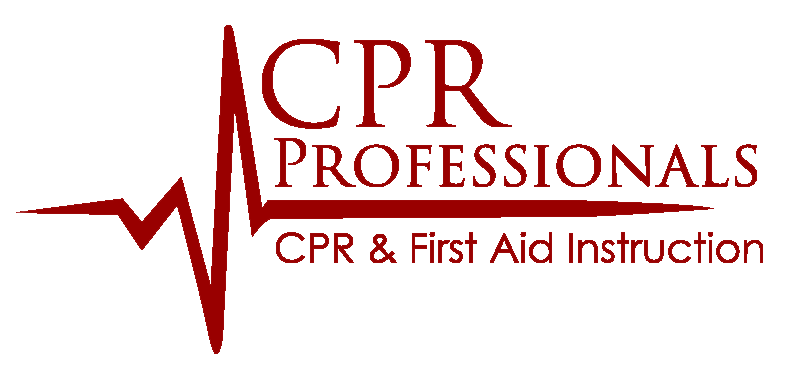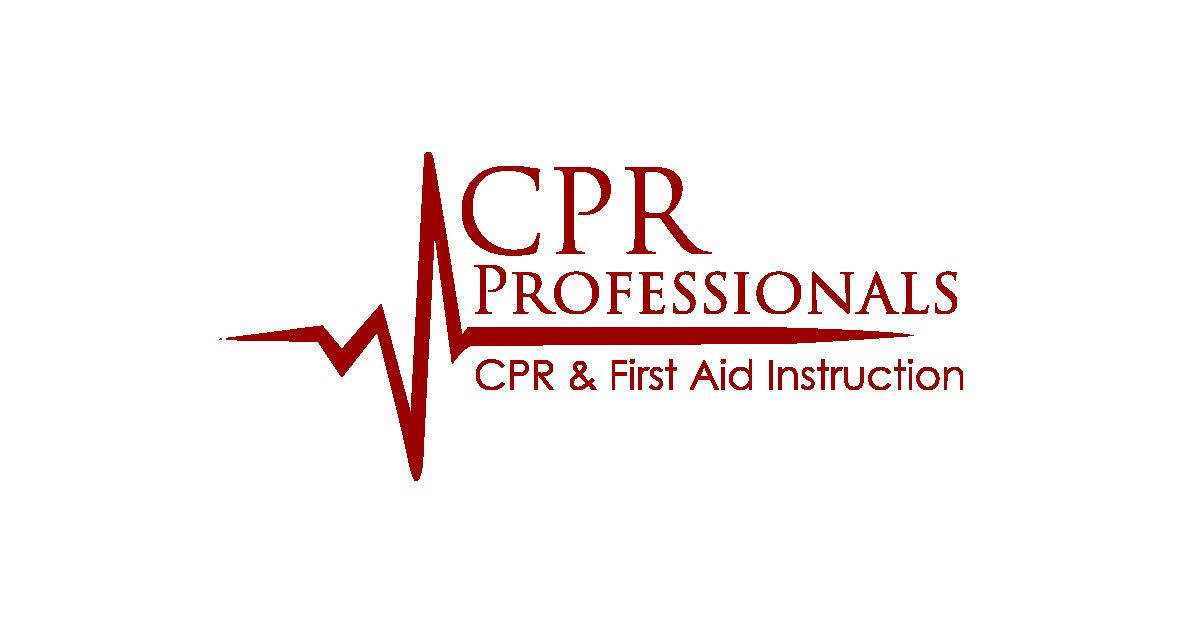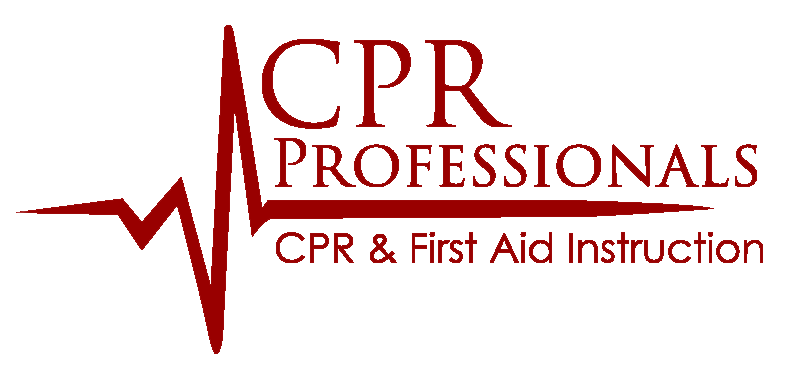CPR-Professionals Presents
Paula Rakin
"Best Practices for Training Centers"
Slide 1:
The Multifaceted Role of Training Center Coordinators
- Work Roles: Leader, Manager, Director, Coach, Problem Solver, Researcher, Compliance Director, Marketing Director, Bookkeeper
- Life Roles: Family Member, Homeowner, Friend, Mentor, Pet Owner
- Impact of Imbalance: High Stress, Quality Decline, Administrative Chaos, Impact on Personal Life
- Solution: Solid base, clear objectives, driven mission, mental health self-care focus
- Q & As for slide 1
For downloadable resources click ANY of the links below
The Hats of Many..
At the heart of a training center, coordinators are not just administrators; they are leaders, visionaries, directors, coaches, problem-solvers, researchers, and guardians of compliance and quality. They are tasked with the key roles of marketing, the intricate dance of bookkeeping, and the essential endeavor of keeping our curriculums aligned with the highest standards. Each of these roles is integral, demanding a unique blend of skills, dedication, and passion.
All work, no play?
Yet, as we navigate through the complexities of these roles, we must not forget that life extends beyond the walls of our training centers. Our coordinators are also family members, homeowners, friends, and mentors. They seek enjoyment in life, nurture friendships, care for pets, and engage in the community. Each of these personal roles is as demanding and fulfilling as their professional ones, requiring time, attention, and energy.
What happens when the scales tip?
However, when the scales of work-life balance tip too far in one direction, the repercussions are felt across the board. High stress becomes a common visitor, not just in the minds of our coordinators but also in the ambiance of our training centers. Projects begin to falter, our instructors face undue pressure, and administrative chaos ensues. The quality of our classes, the very essence of our purpose, starts to lag behind the standards we strive to uphold. Paperwork, a necessary evil in any organized setting, spirals out of control, becoming a monstrous entity of its own.
Closing time...
But the impact does not end at the close of business hours. The stress, the frustrations, and the unresolved challenges of the workplace seep into the sanctuaries of our personal lives. They become uninvited guests at our dinner tables, fueling arguments, eroding the precious separation of work and home life, to the point where even our pets sense the tension, their silent companionship turning wary.
How do we counter these issues?
A SOLID base
CLEAR objectives
DRIVEN Mission
It is within this context that the foundational strength of our training centers becomes paramount. The concept is simple, yet profound - a solid base, clear objectives, and a driven mission are indispensable.
Just as a building cannot stand tall without a sturdy foundation, our training centers cannot flourish without a balanced, focused, and well-supported coordination team.
Slide 1: Q & As
Q1: How do the multiple roles of a Training Center Coordinator impact their effectiveness in managing a training center?
A1: Balancing these diverse roles effectively ensures that coordinators can lead with vision, manage with efficiency, solve problems creatively, and maintain high standards, all while nurturing their personal well-being.
Q2: What are some strategies to prevent the adverse effects of work-life imbalance mentioned?
A2: Being able to physically separate from work helps maintain a healthy work-life balance, allowing coordinators to recharge and return refreshed.
Q3: How does the stress from an imbalanced work-life manifest in a training center's daily operations?
A3: It can lead to decreased quality in training, demotivated staff, administrative disarray, and ultimately, a decline in the center's reputation and effectiveness.
Q4: Can you give an example of how effective time management has directly improved a training center's operations?
A4: Effective time management might allow a coordinator to implement a new, more efficient scheduling system for classes, improving instructor availability and student satisfaction.
Slide 2:
Time Management - The Essence of Coordination
- Time Blocks: Discipline, Task Completion, Detail Attention
- Benefits: Reduced Stress, Timeliness, Clarity, Innovation Space
- Scattered Syndrome: What is scattered syndrome?
- Strategy: Honor Limits to Expand, Embrace Innovation, Balance Professional & Personal Life
- Q & As for slide 2
For downloadable resources click ANY of the links below
Time Management..
Imagine, if you will, a disciplined workplace. A place where every task, every responsibility, is accounted for, not just in our minds but in the very structure of our day. This is the power of time blocks. By dedicating specific segments of our day to specific tasks, we create a rhythm, a predictability that brings order to potential chaos. Tasks are no longer forgotten, ignored, or avoided. They are addressed with the attention and care they deserve, moving forward with timeliness, completeness, and an unwavering attention to detail. This clarity in the moment, this focus, is what brings out the best in our work and in our teams.
Stop stressing, start time managing..
But the benefits of such a disciplined approach to time management extend beyond just keeping tasks on track. They serve as a bulwark against the all-too-common foes of stress and the
'scattered syndrome', where one's mind is pulled in a myriad of directions, leaving tasks incomplete and our potential untapped. By honoring the limits of our time blocks, we paradoxically expand within them. We find room for innovation, for creativity, for those serendipitous ideas that often come when our minds are not cluttered with the unchecked boxes of our to-do lists.
Scattered syndrome: Where one's mind is pulled in a myriad of directions, leaving tasks incomplete and our potential untapped.
Free time? What's that?
And let's not forget the
most precious commodity that effective time management affords us - free time. Time to breathe, to reflect, to engage with those aspects of our lives that fill us with joy and purpose outside of our professional responsibilities. This is not just about efficiency; it's about creating a space where our professional and personal lives can coexist in harmony.
Mission Impossible, now POSSIBLE..
Now, as coordinators within the esteemed framework of the American Heart Association, this disciplined approach to time management takes on an even greater significance. We are not just managing tasks; we are stewarding a mission. A mission "to be a relentless force for a world of longer, healthier lives." When we implement and maintain an effective and innovative time management system, we do more than just keep our training centers running smoothly. We realize, see, and experience the tangible difference we make in others' lives every day.
Our Mission?
"To be a relentless force for a world of longer, healthier lives while experiencing the tangible difference we make in others' every day."
Driving innovation through time management
In essence, outstanding time management is not just about keeping everything flowing; it's about opening new paths. Paths for ideas, for innovations, and yes, for those moments of free time that refresh and rejuvenate us. But most importantly, it's about fulfilling our role in the AHA's mission with the utmost dedication and impact.
Slide 2: Q & As
Q1: Why are time blocks considered a crucial element in time management for Training Center Coordinators?
A1: Time blocks help ensure tasks are given dedicated focus, prevent procrastination, and aid in the timely completion of tasks, enhancing overall productivity and reducing stress.
Q2: How can honoring time limits within time blocks contribute to a coordinator's ability to innovate?
A2: By adhering to set time limits, coordinators can create space within their schedules for reflection, brainstorming, and pursuing new ideas, leading to innovation.
Q3: What are some consequences of poor time management in the context of a training center?
A3: Poor time management can lead to missed deadlines, lower quality training sessions, increased stress, and a loss of trust among staff and students.
Q4: Why is it important for coordinators to maintain their roles outside of work, like hobbies or spending time with family?
A4: Engaging in personal interests and spending time with loved ones help maintain mental health, reduce stress, and improve overall job satisfaction and performance.
Slide 3:
Organization - Creating an Inspiring Workspace
- Workspace Options: From Home Office to Commercial Space
- Workspace Essentials: Comfort, Accessibility, Joy (Plants! Color!)
- Efficiency Tools: Effective Filing System, Technology Use, Whiteboards for Time Blocks & Tasks
- Productivity Tip: Start with Difficult Tasks, Use Time Blocks Wisely
- Q & As for slide 3
For downloadable resources click ANY of the links below
Organization!
It's the scaffolding upon which the edifice of our work-life balance rests, the framework that supports our endeavors, both grand and mundane. So, let's dive in and get organized!
The first step in this organizational odyssey is setting up a conducive workspace. Now, the possibilities here are as diverse as our imaginations. From the humble kitchen table to the solitude of a home office, the expanse of a garage, or even the whimsy of a treehouse—yes, you heard that right, a treehouse. While not the most practical for all, it's a dream that underscores the essence of what we seek in a workspace: inspiration.
Choosing your workspace.
Choosing the right workspace involves a delicate balancing act. It's about assessing what's available, ensuring cost-effectiveness, comfort, and accessibility. It's crucial that this space allows you to close up and step away at the end of each day, signifying a clear boundary between work and personal life. And let's not forget the ambiance—make it welcoming with a touch of nature, vibrant colors, and elements that reduce stress and spark joy.
My neck, my back, YIKES..
Now, onto the essentials—office furniture. Never underestimate the value of a good chair; a happy back indeed comes from a happy chair. And in today's interconnected world, consider the logistics of communication—phones, voicemail systems, and the undeniable sanity-saver, email. But remember, efficiency in communication doesn't just lie in the medium; it's also in the economy of words, the timeliness of response, and above all, kindness and patience in each interaction.
Keeping track doesn't have to be hard..
But what about keeping track of all those tasks and responsibilities? Here's where a personalized filing system comes into play, tailored to the unique needs of your training center. And while technology offers remarkable tools, never underestimate the power of writing things down. It keeps you grounded, connected to the task at hand.
Simple, but effective.
Let's talk about the whiteboard, a simple yet powerful tool. Use it to list your time blocks and associated tasks, always tackling the most daunting tasks first. This strategy not only sets you up for success but also prevents procrastination and the stress of last-minute rushes. Remember, discipline is key. Dedicate a specific time block to a task, say 20 minutes for QuickBooks, and when the time's up, move on. This teaches your brain to maximize each block, giving every task the attention it deserves and maintaining clear direction.
"Organization is not just about efficiency; it's about creating a space that nurtures creativity and supports your mission."
Slide 3: Q & As
Q1: How does the choice of workspace impact the productivity and well-being of a Training Center Coordinator?
A1: The right workspace can enhance focus, inspire creativity, and increase efficiency, while also being a place where the coordinator feels comfortable and motivated.
Q2: Why is it important to have a workspace that is easy to 'close up and walk away from' at the end of the day?
A2: Being able to physically separate from work helps maintain a healthy work-life balance, allowing coordinators to recharge and return refreshed.
Q3: How do office aesthetics, like plants and color, contribute to a productive work environment?
A3: Aesthetically pleasing elements can reduce stress, increase job satisfaction, and foster a positive, energizing work atmosphere.
Q4: What role does an effective filing system play in the daily operations of a training center?
A4: An effective filing system ensures that important documents are readily accessible, reducing time wastage and keeping operations smooth and compliant.
Slide 4: Instructor Support - Beyond Meeting Needs
- Service Levels: Meeting Needs, Exceeding Expectations, Anticipating Needs
- Coordinator's Role: Proactive, Compassionate, Mission-Driven
- Impact: Difference in Lives, Contribution to AHA’s Mission
- Q & As for slide 4
For downloadable resources click ANY of the links below
Exceeding Expectations
In the realm of service, meeting the needs of those we serve is the baseline, the very least we can do. A great business understands this and strives to meet these needs consistently. However, to elevate from good to excellent, we must aim not just to meet, but to exceed the expectations of our instructors. This is where the true magic happens, where satisfaction transforms into delight, and where our training centers begin to stand apart.
Stewards of Excellence
But let us not stop at excellence. As coordinates and stewards of the AHA's vital mission, we are called to go even further. To be outstanding in our service means to anticipate the needs of our instructors before they even arise. This proactive approach is what sets an AHA Training Center Coordinator apart. It's about knowing our audience, understanding their challenges, and foreseeing their requirements. It's about crafting solutions before the questions are asked, about smoothing the path before the first step is taken.
Elevated Services
This anticipatory approach to instructor support does more than just elevate our standing; it cements our role as leaders, as pioneers in the field of health and safety training. It showcases our commitment not just to education, but to the well-being and success of every individual who walks through our doors or engages with our programs.
Embracing Instructor Centric Philosophy
In embracing this philosophy, we embody the very essence of the AHA's mission. We become not just providers of training, but partners in a global movement towards a world of longer, healthier lives. We become, in every sense, a relentless force for good, guided by foresight, compassion, and an unwavering commitment to excellence.
AHA Training Center Coordinators have the PRIVILEDGE
As AHA Training Center Coordinators, this is our charge, our mission, and our privilege. Let us carry it forward with pride, with dedication, and with an eye always towards the future needs of those we serve. Thank you for your commitment to this noble cause and for your dedication to setting new standards in instructor support.
Slide 4: Q & As
Q1: What distinguishes an outstanding AHA Training Center Coordinator's approach to instructor support?
A1: An outstanding coordinator not only meets and exceeds instructor needs but also anticipates them, ensuring that every interaction adds value and enhances the learning experience.
Q2: How can anticipating the needs of instructors contribute to a training center's success?
A2: By anticipating needs, a training center can offer personalized, proactive solutions, improving instructor satisfaction and loyalty and setting the center apart from competitors.
Q3: Can you provide an example of how a coordinator might anticipate a instructors need in a CPR training context?
A3: A coordinator might anticipate the need for more hands-on practice sessions for students who feel anxious about performing CPR and arrange additional practice opportunities before certification.
Q4: Why is kindness and patience important in communicating with instructors, especially in a training center environment?
A4: Kindness and patience foster a supportive and inclusive learning environment, encouraging students to engage fully and ask questions, which is crucial in high-stakes training like CPR.
Slide 5: Elevating Training Excellence
- Onboarding New Instructors: Tailored orientation, comprehensive review, support systems
- Promoting Instructors to Faculty: Identifying candidates, setting clear criteria, personalized approach
- Strengthening the Team: Formal recognition, training for new roles, ongoing support
- Feedback and Recognition: Establishing feedback loops, celebrating achievements
- Impact on Training Quality: Enhanced course delivery, motivated instructors, improved student outcomes
- Q & As for slide 5
For downloadable resources click ANY of the links below
- Training Titan Transformation: Elevating Instructors to Faculty
- Instructor Induction Insights: Streamlining New Instructor Onboarding
- Slide 5-PDF
Investment for the FUTURE
It's essential to recognize the transformative power of
effectively onboarding new instructors and the strategic elevation of seasoned instructors to faculty roles within our training centers. These practices are not just administrative duties; they are crucial investments in the heart and soul of our mission - to deliver exceptional CPR training.
SUCCESSFUL integration creates foundation
The process of integrating new instructors into our teams, as outlined in the "Instructor Induction Insights," is foundational. By providing a well-structured orientation, personalized welcome packs, and clear scheduling, we set them up for success from day one. This approach ensures they are fully aligned with our center's culture, values, and the high standards we uphold.
Transparency through communication
Furthermore, the transition described in "Training Titan Transformation" from instructors to faculty members is a testament to our commitment to professional growth and excellence. By identifying candidates based on merit, offering transparent communication about the role, and providing continuous support, we not only recognize their dedication and expertise but also enhance our training center's offerings. This acknowledgment serves as a beacon, motivating others within our team to strive for excellence.
Feedback loop & Culture, like PB&J
The establishment of a feedback loop and the regular celebration of achievements foster a culture of continuous improvement and collaboration. They remind us that every instructor and faculty member plays a vital role in the life-saving work we do.
Let's not forget..
But let's not forget, amidst these endeavors, the importance of preserving our mental health. The dedication we bring to training others in CPR is a reflection of our passion and commitment to saving lives. However, it's crucial that we also take time for ourselves, to recharge, reflect, and maintain our well-being. Only then can we continue to inspire, lead, and make a difference in the lives of those we train and those they will go on to save.
Slide 5: Q & As
Q1: How does a well-structured orientation process for new instructors contribute to the overall effectiveness of a CPR training center?
A1: A well-structured orientation ensures that new instructors are fully integrated into the training center's culture and understand their roles and responsibilities, leading to more effective teaching, better student outcomes, and a cohesive team environment.
Q2: What are the benefits of promoting seasoned instructors to training faculty within a CPR training center?
A2: Promoting seasoned instructors to faculty recognizes their expertise and dedication, which strengthens the team by bringing in leadership with deep knowledge and experience. This also motivates other instructors by showing a clear path for professional growth.
Q3: How does continuous support and the establishment of a feedback loop enhance the training center's environment?
A3: Continuous support ensures that both new and seasoned instructors have the resources and guidance they need to succeed. A feedback loop fosters open communication, allowing for the sharing of experiences, challenges, and suggestions, which leads to ongoing improvement and innovation in training methodologies.
Q4: Why is it important for instructors and faculty members to take time for themselves and focus on their mental health?
A4: Focusing on mental health is crucial because it helps prevent burnout, ensures high-quality teaching, and maintains the instructor's passion for CPR training. Taking time for self-care allows instructors to recharge, ensuring they can continue to deliver impactful training and contribute meaningally to the mission of saving lives.
AHA Compliance - The Digital Requirement
- Embrace Your Digital Identity
- The Digital Requirement
- Why a Website is Essential
- Establish Your AHA Training Center Online
- Your digital presence is your IDENITY
- Enhance Engagement & Accessibility
- Expand your reach
- Simplify Operations
- Ready to Build Your Digital Foundation?
- Digital Presence: Q & As
Click below to get started-AHA Digital Asset Creation
Embrace Your Digital Identity
Why every AHA training center REQUIRES a website
In the digital era, your online presence is not just an extension of your training center; it's a fundamental pillar of your identity. Here's why a website is indispensable for every AHA Training Center:
AHA Compliance - the digital Requirement
As mandated by the American Heart Association (AHA), having a dedicated website is not just an option for CPR Training Centers—it's a necessity. This
requirement underscores the AHA's commitment to ensuring that all affiliated training centers uphold the highest standards of accessibility, professionalism, and quality in their operations.
Why a website is essential
- AHA Compliance: Adhering to AHA guidelines, a website for your training center ensures compliance, reflecting your commitment to meeting and exceeding industry standards.
- Validation of Affiliation: A website serves as a public affirmation of your center's affiliation with the AHA, providing reassurance to potential students and partners about the credibility of your training programs.
ScanME to get started Today!

Establish your AHA training center online
Don't let your training center fall behind in meeting AHA's digital requirements. A website is your first step towards not just compliance, but also showcasing your center's commitment to lifesaving education.
Your digital presence is your IDENITY
Why it's important your training center has a website
Professional Presence: A website is a mark of professionalism, offering a first impression that speaks volumes about your commitment to quality education and training.
Central Information Hub: From course details to instructor qualifications, your website serves as the go-to source for all relevant information, making it easier for potential students to trust and choose your center.
Enhance engagement & accessibility
24/7 Availability:
Your website is always working for you, providing information, accepting course registrations, and facilitating inquiries, regardless of the time of day.
Interactive Platform:
Utilize your website to engage with your audience through blogs, updates, and testimonials, keeping your community informed and involved.
Expand your reach
Visibility: With the right SEO strategies, your website can attract more students by appearing in relevant search results, expanding your reach beyond local confines.
Digital Marketing: Leverage your website for targeted marketing campaigns, utilizing analytics to understand and cater to your audience's needs more effectively.
Simplify operations
Streamlined Processes: Online registration, payment processing, and scheduling integrated into your website streamline operations, making administrative tasks more manageable and less time-consuming.
Resource Hub: Provide students and instructors with easy access to necessary materials, resources, and updates, all centralized on your website.
Ready to build your digital foundation?
Your training center deserves a website that reflects its mission, quality, and dedication to lifesaving education. Don't let your center be the missing piece in the digital puzzle. Let's build a website that not only meets the essential requirement of being an AHA Training Center but also propels you forward in the digital landscape.
Digital Presence: Q & As
Q1: Is it mandatory for all AHA Training Centers to have a website?
A1: Yes, according to the American Heart Association's guidelines, having a website is a requisite for all AHA Training Centers. This requirement ensures that training centers are easily accessible and can provide essential information to potential students and instructors.
Q2: What are the benefits of complying with the AHA's website requirement?
A2: Complying with the AHA's website requirement not only ensures your training center meets industry standards but also enhances your center's credibility and professionalism. A website increases visibility, facilitates engagement, and streamlines administrative processes, ultimately improving the overall experience for both students and instructors.
Q3: Can a training center use social media profiles instead of a website to meet the AHA's digital presence requirement?
A3: While social media profiles are valuable for engagement and outreach, they do not fulfill the AHA's requirement for a dedicated website. A website provides a comprehensive, centralized, and professional platform that social media alone cannot offer, making it essential for meeting AHA's standards.
Q4: What should be included on a training center's website to comply with AHA standards?
A4: An AHA Training Center's website should include detailed information about the courses offered, instructor qualifications, class schedules, registration processes, and contact information. It should also provide easy access to resources for both students and instructors, ensuring it serves as a comprehensive hub for all training-related needs.
Additional Resources
Click on any of the resources below to download directly to your device. Resources will be in PDF format.
The following companies have supported CPR-Professionals and Paula Rankin by providing resources and (or) solutions to help training centers thrive.
Digital Assets Creation & Management
Website Development, Software Integration, Automations, Content Creation, SEO, Business Consultations, Mind Mapping, Solution Driven Products & more.

Ready to ELEVATE your training center's digital presence?
Seeking seamless management for your training center's digital assets?
Paula Rankin
Training Center Coordinator
prankin@cpr-professionals.com
(720) 989-5980
www.cpr-professionals.com



